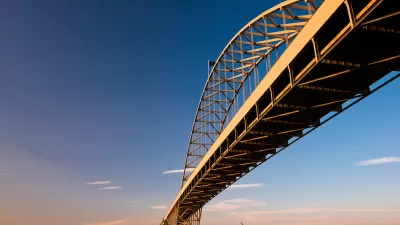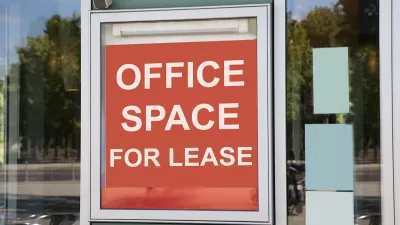Towns with shrinking or stagnant tax bases can't keep up with the costs of aging infrastructure without state and federal support.

Small cities around the country are struggling to pay for infrastructure projects, and as Jake Blumgart writes in Governing, many of them have "staggering" needs that they can't tackle without state and federal support, which lags far behind other countries–"only 2.4 percent American gross domestic product is applied to infrastructure, in comparison with 5 percent in the European Union and 9 percent in China."
"Advocates of increased infrastructure spending also note that before the 1980s there were greater federal commitments to at least some local projects. In the 1970s, the federal government paid to update many drinking and wastewater systems to bring them up to newly instituted environmental standards. But federal investments in water infrastructure fell during the 1980s." Today, cities with stagnant tax bases "can't [keep up with infrastructure needs] without vastly increasing their property tax revenues. If older cities just keep jacking the property tax rate up, that creates a vicious downward cycle where more population leaves," says Bill Fulton, director of the Kinder Institute for Urban Research at Rice University.
It isn't just Rust Belt cities feeling the pinch. "In many cases, more recently developed regions have leveraged population growth to get developers to build a lot of their necessary infrastructure. As a side effect, the consequences of the strict caps that states like California and Washington place on property tax increases were not felt. Today, however, population growth is slowing and developers are not on the hook to patch up the infrastructure they built decades ago. Property taxes revenues are not keeping up with regular expenditures, let alone expensive infrastructure investments." For mayors like Ferndale, Michigan's Melanie Piana, any new federal commitments to local infrastructure funding could inject much-needed capital into city coffers.
FULL STORY: Small Cities Can’t Manage the High Cost of Old Infrastructure

Alabama: Trump Terminates Settlements for Black Communities Harmed By Raw Sewage
Trump deemed the landmark civil rights agreement “illegal DEI and environmental justice policy.”

Planetizen Federal Action Tracker
A weekly monitor of how Trump’s orders and actions are impacting planners and planning in America.

Why Should We Subsidize Public Transportation?
Many public transit agencies face financial stress due to rising costs, declining fare revenue, and declining subsidies. Transit advocates must provide a strong business case for increasing public transit funding.

Understanding Road Diets
An explainer from Momentum highlights the advantages of reducing vehicle lanes in favor of more bike, transit, and pedestrian infrastructure.

New California Law Regulates Warehouse Pollution
A new law tightens building and emissions regulations for large distribution warehouses to mitigate air pollution and traffic in surrounding communities.

Phoenix Announces Opening Date for Light Rail Extension
The South Central extension will connect South Phoenix to downtown and other major hubs starting on June 7.
Urban Design for Planners 1: Software Tools
This six-course series explores essential urban design concepts using open source software and equips planners with the tools they need to participate fully in the urban design process.
Planning for Universal Design
Learn the tools for implementing Universal Design in planning regulations.
Caltrans
Smith Gee Studio
Institute for Housing and Urban Development Studies (IHS)
City of Grandview
Harvard GSD Executive Education
Toledo-Lucas County Plan Commissions
Salt Lake City
NYU Wagner Graduate School of Public Service





























